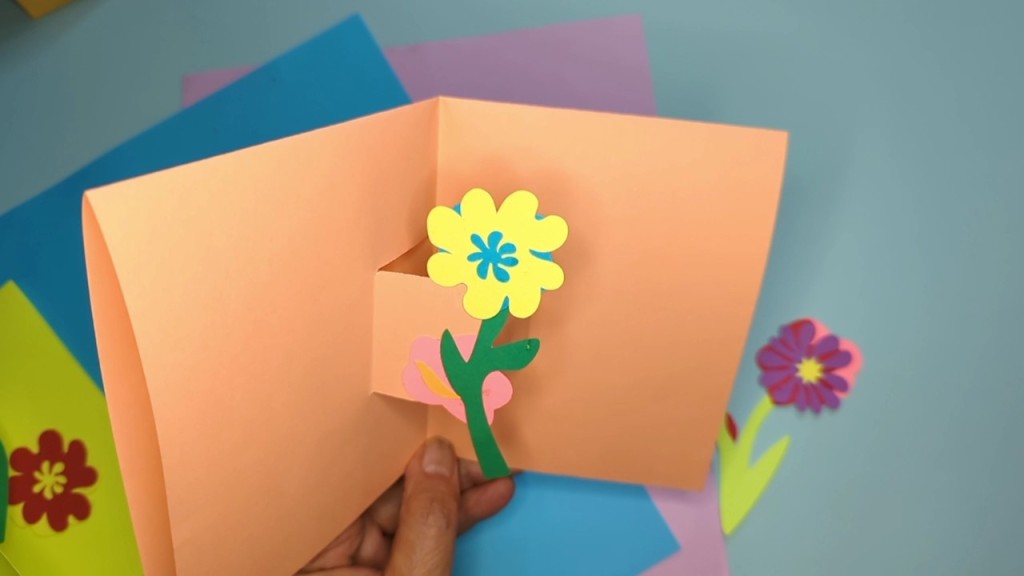
It is really hard for me to write about pop-ups. The biggest problem is that there is so much to say, so many variations and possibilities embedded in even the simplest pop-up structure that narrowing the conversation is super uncomfortable.
Still, I’m going to try to stay focused here on two points about teaching children how to make pop-ups. One focus will be showing a specific method of introducing children to a simple pop-pop construction. I think even the most seasoned pop-up instructors will like this method.
The other point I have to make is more meta in that I want to share is something about how this instructional lesson evolved.
Having had opportunity to do hands-on paper projects with a gazillion classes of young children over the last few decades has given me the opportunity to experience flaws in my instruction and then immediately have the opportunity to chart a different course for the next class. From this experience, I’ve gleaned some wisdom that I want to pass on, as it may be the best bit of lesson-shaping advice that I have.

Here’s what I want you to know: when students consistently stumble on a certain step of a lesson, where I can count on 40 to 80 percent of the group losing the thread of what I’m trying to show them, it’s time to embrace that wayward step. Instead of trying to avoid missteps that students seem intuitively inclined to make, I need to to guide them to the trouble spot (which is now just another leg of the journey), then show them the way forward from where we’ve landed together. This simple (profound?) shift, of leading them to, then from, where they naturally generally end up, has transformed many painful lessons into joyful excursions.
The video clip below shows the way I recently taught the simple box pop-up to a group of third graders. When learning pop-ups, the problem that frustrates children is that , when they open their card, their pop-up often stays flat or flattens. My method here is an example of leaning into the “problem” by teaching them to create a card that, initially, opens flat with no pop-up in sight. Only after acknowledging the flatness is the pop-up activated.
There you have it, then: a great way to teach the pop-up, and my thoughts on what led me to show it in the way that I do.
I should end the post here, but maybe you’d like to see I how recently used this method with some kids. Below is a clip of the sample book I made to show students.
If you want to look at one of my most visited evergreen posts about pop-ups, which includes some one-page printable handouts as well as links to resources, go visit https://bookzoompa.wordpress.com/2011/10/07/a-nod-to-how-to-make-pop-ups/. If you just want to jump to the best on-line pop-up video resource imaginable, that would be Duncan Birmingham’s Pop-Up Channel

Maybe due to our rainy weather…. None of the links were functional .. the only one was the p
LikeLike
I checked the links and they seem okay on my end….perhaps you lost internet access after the post loaded? Try again and let me know if all is well.
LikeLike
Fun stuff! One thing we realized as we were making our own pop-ups is that the piece you glue in has can’t be too wide or it will stick out the edge or get folded when you close the card.
LikeLike
Hi Celeste, glad you tried it out. I had considered adding that detail in the post but decided that this was something that people could discover on their own. There are so many details to consider even with the most straightforward bits of paper engineering. I’m so glad you are playing along.
LikeLiked by 1 person